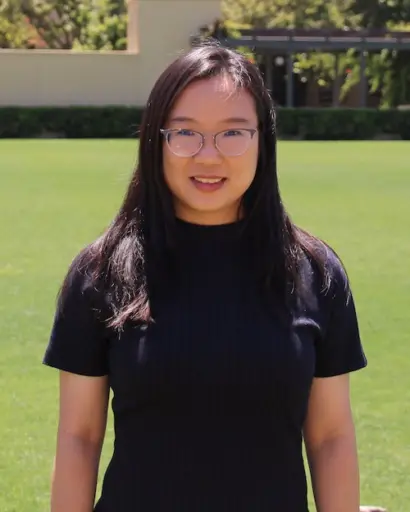On an individual level, scrolling through Twitter for a few minutes or streaming music during a run may not seem like they use much juice.
 Ying Wang
Ying Wang
But add up the energy used by all the servers, computers and other data devices in the world and it’s a pretty good slice of the global energy pie. In fact, over the next decade, experts believe energy consumption from data will eat up about 8 percent of the world’s energy.
“We need ways to reduce that,” says Ying Wang, who joined the UW-Madison Department of Electrical and Computer Engineering as an assistant professor in August 2020. “Quantum materials, which are super-robust, are a way to potentially solve that challenge.”
Wang, who earned a bachelor’s degree in physics from Nanjing University and her PhD in applied physics and technology from the University of California, Berkeley, hopes that her research focus on 2D materials, which are about 100,000 times thinner than a human hair, could eventually be part of the solution.
The first 2D material, which was isolated in 2004, is graphene. Its lattice of carbon only a single atom thick gives it unique electrical, magnetic and physical properties. It’s considered a “wonder” material with potential applications in electronics, composites and coatings, and even water filtration.
But graphene isn’t the only 2D material out there. Wang has focused her research on another class of monolayers called transition metal dichalcogenides. These materials show great promise as semiconductors that can serve as the basis of super-thin electronic memory devices.
However, to be useful, these 2D dichalcogenides need alteration or tuning. Wang’s previous research involved developing methods, like electrostatic electron doping, to reorder their atomic structures. She also observed and analyzed exotic structural orderings and quantum electronic ordering’s role in electronic devices.
At UW-Madison, however, she hopes to take things a step further. 2D quantum materials, under sophisticated phase engineering, can support novel information carriers such as solitons, single photon emitters, and superconducting states, which hold great potential for memory and quantum computing elements. She wants to bring the theoretical potential of energy-efficient, robust and sensitive 2D components into reality at Madison.
In her new lab, she will build up a multifunctional cryogenic system with electrical, optical and magnetic controls. “Dynamically combining these three dimensions is very powerful,” says Wang. “This will allow us to probe materials or devices in a comprehensive way, providing a much clearer road map to gear our engineering strategy. This platform will give us that kind of chance.”
To that end, she’s excited to begin working on campus so she can collaborate with the university’s cluster of quantum technology and materials synthesis experts as well as characterization specialists who can move the field forward. “2D materials have a mechanical flexibility and electrical tunability that no other material can compete with,” she says. “They can be easily transferred to or integrated with current silicon-based technology. We have a huge playground to explore with these quantum materials.”